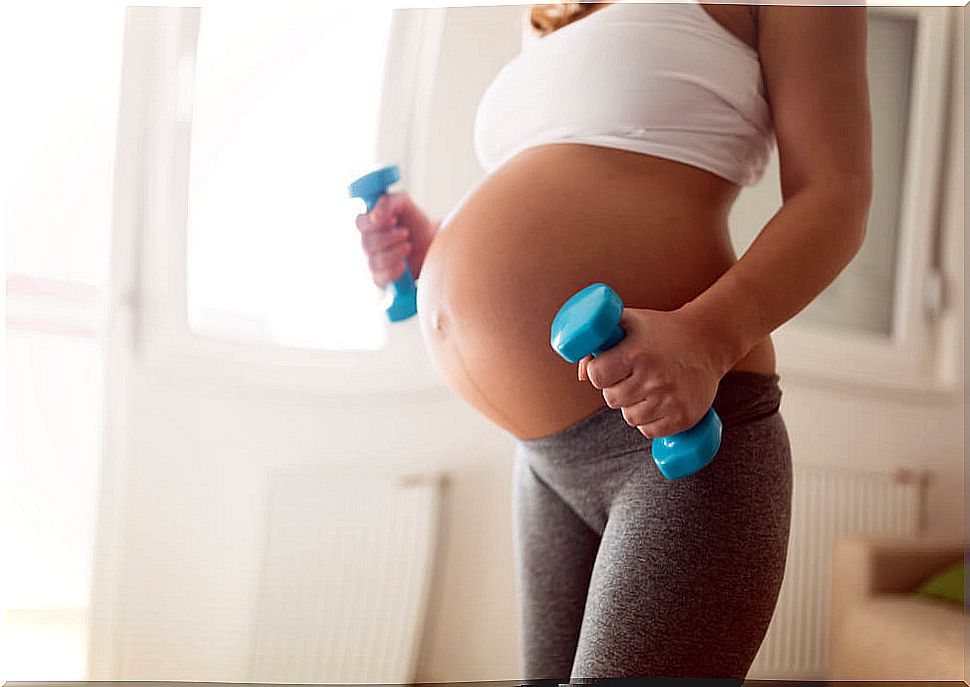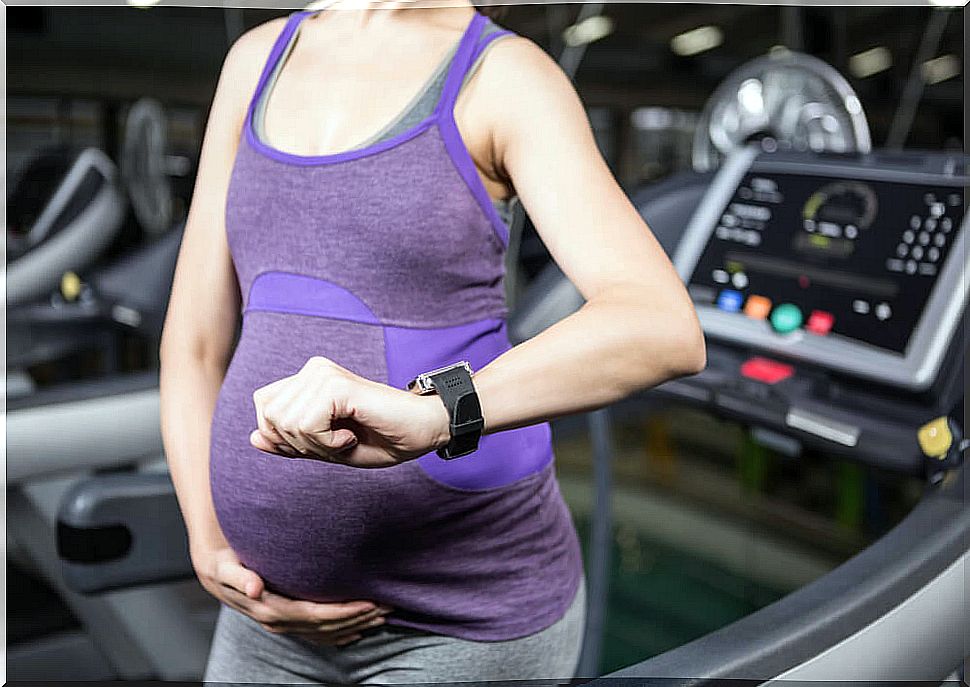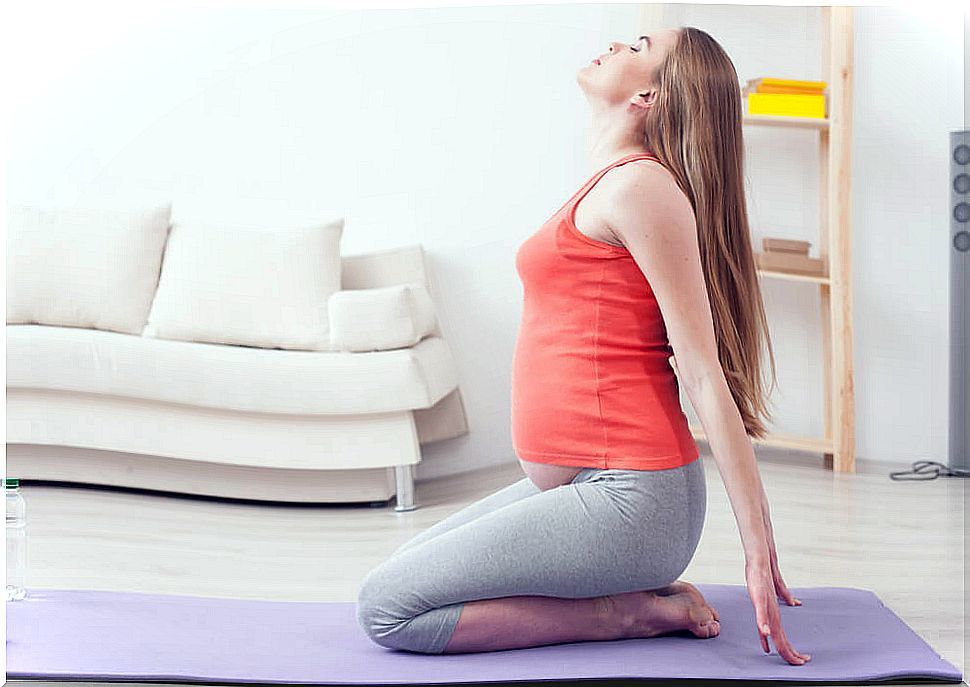Physical Activity In Pregnancy: Recommended Exercises
Physical activity in pregnancy carries minimal risk and improves a woman’s physical condition and mental health. However, before recommending an exercise program, a medical check-up should be performed to detect possible contraindications.
Here we give you the keys to perform physical activity in pregnancy in a healthy and effective way. Keep reading!
The American College of Obstetricians and Gynecologists (ACOG) makes the following distinction:
- Physical activity is defined as any body movement produced by the contraction of skeletal muscle.
- Exercise is defined as the set of planned, structured and repeated movements at a given frequency. They are done to improve physical condition.
Physiological aspects of physical activity in pregnancy

The physiological changes that occur during pregnancy are to allow the development of the fetus and prepare the mother for delivery. These occur mostly as a product of hormonal activity.
Cardiovascular adaptations
- Decreased vascular resistance (RV), due to peripheral vasodilation caused by nitric oxide, atrial natriuretic peptide and uteroplacental circulation.
- Increased heart rate (HR) occurs to compensate for the decreased RV. It increases from 10 to 15 lmp in the 5th to 7th week of gestation (SG).
- Decrease in blood pressure (BP) by 10% in the 7th to 8th SG, and continues until 24 SG.
- Increased cardiac output (CO) from the 5th OS, due to an increase in HR and stroke volume. It can be 8 L / minute (normal 6 L / minute) in the 32 SG.
Respiratory adaptations
- Subcostal angle increase by 50%.
- Increased diameter and circumference of the thorax by 2 cm and 5 to 7 cm, respectively.
- Diaphragm elevation (5 cm).
- Decrease in residual functional capacity (volume of air contained in the lungs) from 17 to 20%, which makes the woman vulnerable to hypoxemia.
- Increased respiratory rate (RR) from 5th SG.
- Hyperventilation due to a decrease in PaCO2 (necessary to stimulate breathing) caused by high levels of progesterone. For this reason, 75% of pregnant women experience dyspnea when performing daily activities.
- Increased oxygen consumption due to changes in the size of the uterus and fetus, and increased respiratory and cardiac function.
Posture during pregnancy is important. The supine position decreases PaCO2 up to 10 mmHg, compared to the sitting position.
Do you want to know more? Read: 3 foods to have a good hemoglobin level during pregnancy
Fetal response to physical activity in pregnancy
Most studies indicate that when a pregnant woman exercises, two physiological changes occur in the fetus:
- Fetal heart rate Increase from 10 to 30 bpm, with respect to the reference value during or after exercise.
- Birth weight. Newborns usually weigh 200 to 400 grams less in pregnant women who are physically active in the 3rd trimester.
Benefits of exercising during pregnancy

Although the evidence is still limited, it has been found that the physical activity during pregnancy does not harm maternal or fetal.
In fact, a study published in Obstetrics & Gynecology supports that pregnant women ” can start or maintain an exercise program at moderate (inactive) or vigorous (active) intensities.”
Other health benefits of physical activity in pregnancy:
- Minimum weight gain (1-2 kg) in normal weight, overweight and obese women.
- Reduces the development of gestational diabetes, varicose veins and deep vein thrombosis.
- It reduces the time of labor and intrapartum complications.
- Reduces the risk of hypertensive disorders of pregnancy.
- Reduces stress, anxiety and depression.
- Improves mood and sleep.
Of course, first of all it is necessary to evaluate the conditions of the pregnant woman, because in some cases certain exercises or the exercise in its entirety can be counterproductive.
Recommended exercise plan in pregnancy
Motivational counseling
Women who maintain good medical control are more likely to take care of their exercise routine. Also to improve your nutrition in general.
In addition, contact with their doctor gives them support, confidence and security. And this translates into an increase in your motivation.
Recommend an individualized exercise program

Scheduled physical activity should include moderate intensity exercises lasting 20 to 30 minutes per day. This depends on the medical condition of the pregnant woman.
Women with sedentary life before pregnancy
- Start 15 minutes a day, 2 times a week.
- Follow with 20 to 30 minutes a day, 3 to 5 times a week.
- Maintain a routine of 30 minutes a day, for 7 days a week, divided into series of 10 minutes.
Physically active women before pregnancy
- Perform series of 30 to 40 minutes a day, seven days a week if there are no conditions that contraindicate it.
- Strenuous exercises (jogging, aerobics) can be practiced as long as they are not for a long time (> 45 minutes).
General recommendations for pregnant women
- Do stretching exercises two or more days a week, being careful to do them slowly.
- Pay special attention to the warning signs, which are an indication of interruption or suspension of exercise.
- If you exercise for long periods of time, they should be done in controlled environments (air conditioning) or at room temperature (25 ° C).
- It is essential to have adequate hydration and caloric intake.
As mentioned before, exercising before, during and after pregnancy is beneficial for the health of every woman.
However, there are conditions that absolutely or relative contraindicate physical activity in pregnancy. Which is why it is important to always consult your doctor.









